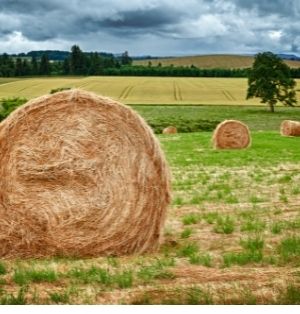
CVFC’s Executive Director John Roberts shares an update on three issues that are foremost in the work he has been doing since January: the proposed Concentrated Animal Feeding Operation (CAFO) rules; the Vermont Climate Council and related committees; and the Task Force on Dairy Pricing.
Have you had time to take a breath? I hope you are able to consider all that you’ve accomplished thus far in 2021. Some of it no doubt feels routine: milk the cows; feed the cows; spread the manure; manage the kidding or the lambing; plant the vegetables, plant the corn; and harvest that crucial first cut.
I know it has not all gone smoothly. There are so many potential pitfalls: the nut that wasn’t tight; the frost that wasn’t timely; the calf, lamb, or kid that came backwards; the seed delivery that didn’t arrive when it should. But you persevered and got the job done, whatever the time, day or night.
I would like to cover three issues that are foremost in the work I have been doing since January: the proposed Concentrated Animal Feeding Operation (CAFO) rules; the Vermont Climate Council and related committees; and the Task Force on Dairy Pricing.
Concentrated Animal Feeding Operation (CAFO) Rules
As part of a five-year permit renewal process under the Clean Water Act, the Agency of Natural Resources is required to undergo a review of its CAFO permit by the Environmental Protection Agency (EPA). How extensive that review and revision needs to be is debatable. With Vermont achieving the water quality benchmarks set by the EPA, I am concerned about why it seems necessary to increase oversight.
It has been stated that farmers who are in compliance with their CAFO permit is protected if an unusual weather event should cause an unplanned discharge. I am concerned about what upgrades may be required to a production facility to obtain that CAFO permit in the first place. In reading the proposed rules, it appears that a production facility will need to manage more runoff from driveways and the like. This may well require much larger waste storage facilities. How will these facilities be paid for and will they be eligible for USDA-NRCS funding?
In addition, requiring an increase of buffers on cropped fields to 35-feet sounds tame, but it might result in the removal of several hundreds–if not thousands–of acres from cropping. This will not necessarily lead to a significant mitigation of runoff, and might depend on an extensive review of ditches and grassed waterways on a farm. These are just a few of the implications that need to be fully considered.
Nonetheless, I am not arguing that our present approach to water quality regulation is perfect. I do not think that there is a farmer today who would argue against the need for regulation. But the administration of regulations should be reviewed in the spirit of making it more timely, more transparent, and more cooperative. I also think it’s time to reconsider how technical and financial advice is given to a farmer. Should there be a dedicated caseworker or point person for each farm coordinated through the conservation districts, for example?
Vermont Climate Council
The Vermont Climate Council is in full swing, working diligently towards producing an initial plan for emissions reduction and, hopefully, carbon sequestration by December 1. As a member of the Agriculture & Ecosystems Subcommittee, I am part of a team assessing the climate pros and cons of more than 100 different practices, including cover cropping, silvopasture, anaerobic digesters, and grazing management. We’re taking a look at how increasing soil organic matter by modest amounts can possibly sequester a lot of carbon. And we’re reviewing the impacts of climate change on different communities.
There are opportunities to participate and submit your comments. Coalition members can reach out to me at any time to talk or ask me to submit comments or ideas.
Dairy Pricing
Another committee I am member of is the Task Force on Revitalizing Vermont’s Dairy Industry. The committee is comprised of legislators, dairy business leaders, financial experts, and Extension personnel. We have had one meeting at this point, and intend to meet on a monthly basis moving forward. This group was established at the behest of the Legislature to continue discussions arising from a report earlier this year from the Office of the Director of Financial Regulation. One point I have mentioned to the group is “do no harm.”
In closing, there’s a lot going on! I’m always being approached with some new project, question, or insight about our farms. I am enjoying the challenge–you never know what the next thing might be.




